Best Milk Nutrition Facts
The Good, The Bad
And The Downright Scary
In my study of milk nutrition, I found information that led to extreme ends of the milk spectrum.
On
one end, there were well respected experts that proved that the
calcium in milk could prevent cancer.
In more recent studies,
scientists have evidence that milk and milk products actually encourage
and promote cancer. There are also experts who are on the extreme end
who claim that milk is one of the most dangerous foods on earth.
One of the hardest things I have to do is pluck out the truth from the madness. I believe there are people who write about foods that have a pathological, abnormal preoccupation with eating healthy foods. I also believe that some of the negative statistical data is exaggerated to promote book sales.
So it's my job to use a level head to figure out the safest, most credible information. There's always a healthy middle ground, and this page will clear up any misconceptions about milk nutrition, whether it's raw, organic, homogenized or pasteurized. So let's get started.
Milk Nutrition: The Good

Serious Benefits of Drinking Milk
- Milk is rich in protein, healthy fats, and essential B vitamins.
- Milk contains complete proteins to build tissue and bones
- Milk is rich in thiamine which aids in energy and growth
- Milk has niacin which aids in healthy nerve development.
- Milk is loaded with folic acid which prevents birth defects.
- Milk is abundant in magnesium, phosphorus, vitamin D and calcium for healthy bones and teeth
- Milk contains vitamin A which produces healthy skin, excellent vision, a strong skeleton and beautiful teeth.
- Milk is abundant in Vitamin D. Vitamin D assists in the absorption of calcium and phosphorus.
- Milk contains important saturated fats that help lay down bone matrix.
Click here to learn about the health benefits of fat and cholesterol.
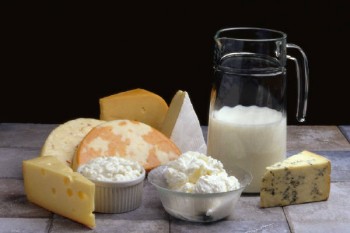
Naturally produced milk is extremely rich in essential nutrients. Here are a Few sensational milk nutrition facts listed below.
Cows fed grass and hay produce milk rich in bioavailable, readily absorbed nutrients:
Milk is nutritionally complete and contains the macronutrients fat, carbohydrates and protein. Milk has saturated fat. This type of saturated fat is easily and quickly burned for energy and is often not stored.
Saturated fat helps to push calcium into bone, so milk does play an important role in osteoporosis prevention.
Interesting Milk Nutrition Facts
- Organic milk has a very rich, creamy texture, and tastes nothing like regular industrialized milk.
- Some experts believe there's no added health benefit to drinking skim milk. When manufacturers make skim or 2% low fat milk, the fat that is removed is used to make butter and other products.
- Manufacturers push the sales of skim milk to increase the sales of other milk products that they use the milk fat for. Even though the removal of fat is practiced to increase sales of other milk products, they do not lower the price of skim milk. This practice massively increases profits.
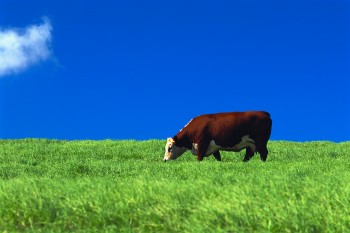
Milk Nutrition Statistics: The Bad
Most
milk comes from cows injected with potent growth hormones. Genetically engineered hormones are injected into cows causing them to
create much more milk than they naturally would. These unnatural
compounds do not belong in the human body. This practice is done to
increase sales and profits.
Since feed-lot raised cattle are given rBGH injections to increase milk
production, it's much safer to drink milk from pasture raised cows who
are fed a natural grass diet.
There is a Credible Link to Increased Cancer Rates:
Industrialized
processed milk causes an increase in IGF-1, (insulin growth factor 1)
and has been linked to an increase in cancers. IGF-1 is a very powerful
insulin-like hormone that causes rapid cell growth. It's my belief that these cancers are linked to milk from cows treated with growth hormones.
Dr. Mercola wrote an article about the use of unlabeled aspartame in milk. Click here to read the article.
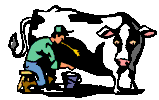
Lactose Intolerance
An extremely common problem for
milk drinkers is lactose intolerance which is caused by an inability to
produce lactase. When lactose is absorbed, lactase is the enzyme that splits the lactose into
galactose and glucose.
Lactose intolerance occurs when cow's milk reaches the intestines, and it creates a host of incredibly uncomfortable and painful symptoms. Lactose intolerance is characterized by bloating, gas, diarrhea and abdominal pains.
Human milk also has lactose, but mother's milk also provides the lactase for the infant.
More Milk Facts
- African-Americans, Middle Easterners, Native Americans, Asians and
Hispanics have a much higher incidence of lactose intolerance.
African-Americans have the highest incidence of lactose intolerance (70
percent), and Caucasians have the lowest (15 percent)
- Lactose intolerant individuals can substitute a pre-digested milk product like buttermilk, yogurt or sour cream. This is done by adding friendly bacteria that breaks the lactose apart.
- Many lactose intolerant people can enjoy raw milk because it still contains the enzymes necessary for digestion
- For lactose intolerant individuals, you can either use Lactaid or avoid milk altogether.
More Milk Nutrition Facts
Milk Can Create
- Lactose Intolerance
- Excessive Mucous
- Allergies
- Stubborn Acne
There is a very strong connection to milk and acne. Click here to learn why.
Listed Below Are Different Types of Milk Substitutes
- Flax milk
- Hemp milk
- Almond Milk
- Soy Milk (use caution)
- Oat Milk
- Coconut Milk
- Rice milk
Soy is the Most Popular Milk Substitute:
Soy Fact: Fortified soy milk has 300 milligrams of calcium, but it's not as readily absorbed by the body as the calcium in cow's milk. One cup of soy milk contains 1/4 of your daily need for calcium and Vitamin D.
Please use extreme caution when drinking soy milk. Unfermented soy products cause endocrine disruptions, increased estrogens, and digestive disturbances. Please read our comprehensive page on soy milk.
Interesting Dairy Facts
- Did you know that the Masai Africans drink a gallon of milk per day and experience robust good health?
- Did
you know that organically raised cows have a lifespan of 10 to 25
years? Cows locked in feet-lots have an average lifespan of six years.
- Did you know that natural milk is seasonal, and not available year round?
- Did you know that milk
is addictive? Milk has a naturally occurring chemical called casomorphins. Casomorphins
are provided by nature to keep the baby cow close to its mother and to
nurture the cow.
- Casomorphins are an addictive substance, and its
effects are similar to morphine. Casomorphins can cause cravings in
humans and are implicated in autistic symptoms. Casomorphins are the reason so many people have a hard
time giving up milk.
- Human milk also has addictive casomorphins, making it very difficult to wean children from breastfeeding.
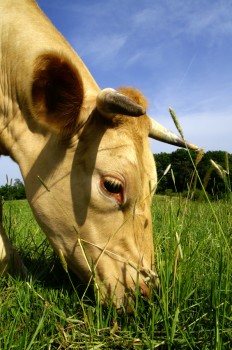
Raw Milk Nutrition & Benefits
Raw milk has not been pasteurized or homogenized. Raw milk is taken straight from the cow to your home or supermarket. Supporters of raw milk swear by it, and claim its many virtues.
Homogenization Definition:
Homogenization is a process that's done to ensure that the milk fat does not separate. Homogenization is a technique that uses high pressure to force the fat in milk into small globules. This ensures that the milk fat stays uniform when it sits. Raw milk is not homogenized.
Pasteurization Definition:
Pasteurization is a heating process that kills micro organisms, nutrients as well as healthy bacteria. During pasteurization, the milk loses biotin, vitamin E, vitamin B-12 and other nutrients. During ultra pasteurization, milk is heated to 180 degrees or higher. Pasteurized milk extends the shelf life of milk. Pasteurized milk lasts two to three weeks. Raw milk only lasts one week.
Pasteurization Plays an Important Role in Disease Prevention
Pasteurization began in the 1800s because dishonest milk salesmen were
selling tainted, diseased milk. To prevent the spread of bovine
tuberculosis, pasteurization laws were enacted.
Pasteurization destroys E. Coli, salmonella, and campylobacter. But pasteurization also kills some vitamins, enzymes, good bacteria and changes the consistency of the milk.
In experiments, cats that are fed only raw milk thrive and become very healthy. Cats that are fed only pasteurized milk become ill and diseased. This is because the pasteurization process kills friendly enzymes, bacteria and necessary nutrients needed for health and digestion.
If raw milk is consumed from cows raised in confinement dairies, it is much more dangerous to drink their milk raw. Cows raised in inhumane conditions create milk loaded with growth hormones, pesticides, antibiotics and animal byproducts. Grass-fed, organically raised cows produce safe milk. They are treated with compassion and care.
Raw milk has been safely consumed by humans for thousands of years. In studies, humans have consumed raw milk without a single incidence of illness. The reason raw milk is vilified is profits. Industrial milk farms don't want competition from raw milk dairies.
More on Raw Milk Nutrition. Realmilk.com has a report to educate consumers.
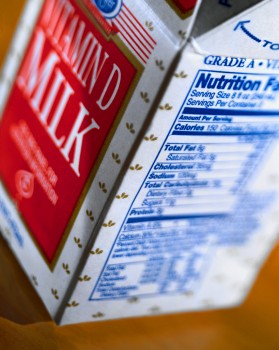
Milk Nutrition, The Downright Scary
Did you know that the vast majority of milk is genetically engineered? As previously stated, modern milk is
adulterated with bovine growth hormones (rGBH or rBST). rBGH stands for Recombinant Bovine Growth Hormones.
These genetically engineered hormones were created to increase milk production in cows. The reason cows are injected with growth hormones is to drastically increase sales.
The United States is one of the few developed countries who have not yet banned rBGH. Synthetic rBGH causes a very serious risk to humans. Milk adulterated with bovine growth hormones creates a much higher risk for cancer. Bovine growth hormone safety has not been evaluated or studied by the Food and Drug Administration
Note: Bovine means cow or cow family
Industrially raised cows are fed a diet of corn, grains and soybeans. This is not an ideal diet for cows. The milk from these cows are nutritionally deficient and do not contain the essential nutrients that grass-fed cows provide.
Here's a link that describes how rBGH is created. It's very important to understand that this is a synthetic substance.
The Video Below Explains How Our Milk Supply is Adulterated
Here Are Some Very Useful Milk Nutrition Tips
The most logical option is to drink raw milk. It has tremendous healthy properties. Some believe there are risks to raw milk, but humans have very successfully consumed raw milk for thousands of years. Raw milk is very tricky to find.
To reach a middle ground, you could try drinking organic pasteurized milk. This milk is more expensive than hormone treated cows, but is far safer. Although it has been pasteurized, it does not contain dangerous pesticides and bovine growth hormones.
Nature Has Chosen Milk Nutrition as an Ideal Food
Milk has received a lot of opposition, stating that it's just for baby cows. There's just as much information stating the tremendous health benefits of milk.
To reach a middle ground, consumers can buy moderate amounts of organic and/or raw milk free of growth hormones.
Sheree Gilkey is a participant in the Amazon Services LLC Associates Program, an affiliate advertising program designed to provide a means for sites to earn advertising fees by advertising and linking to amazon.com

